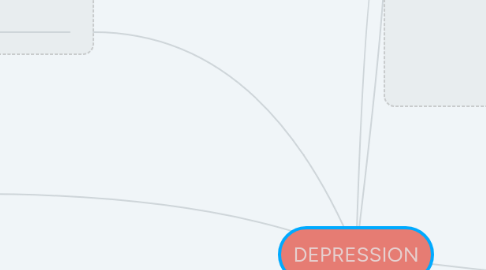DEPRESSION
by Grace Guevara

1. Depression causes feelings of sadness and/or a loss of interest in activities once enjoyed.
2. A common and serious medical illness that negatively affects how you feel, the way you think and how you act. Fortunately, it is also treatable.
3. A.K.A Major Dippresive Disorder
4. How Is Depression Treated?
4.1. Medication: Brain chemistry may contribute to an individual’s depression and may factor into their treatment. For this reason, antidepressants might be prescribed to help modify one’s brain chemistry. These medications are not sedatives, “uppers” or tranquilizers. They are not habit-forming. Generally antidepressant medications have no stimulating effect on people not experiencing depression.
4.2. Psychotherapy: Psychotherapy, or “talk therapy,” is sometimes used alone for treatment of mild depression; for moderate to severe depression, psychotherapy is often used in along with antidepressant medications. Cognitive behavioral therapy (CBT) has been found to be effective in treating depression. CBT is a form of therapy focused on the present and problem solving. CBT helps a person to recognize distorted thinking and then change behaviors and thinking.
4.3. Electroconvulsive Therapy (ECT) is a medical treatment most commonly used for patients with severe major depression or bipolar disorder who have not responded to other treatments. It involves a brief electrical stimulation of the brain while the patient is under anesthesia. A patient typically receives ECT two to three times a week for a total of six to 12 treatments. ECT has been used since the 1940s, and many years of research have led to major improvements. It is usually managed by a team of trained medical professionals including a psychiatrist, an anesthesiologist and a nurse or physician assistant.
5. Several factors can play a role in depression:
5.1. Biochemistry: Differences in certain chemicals in the brain may contribute to symptoms of depression.
5.2. Genetics: Depression can run in families. For example, if one identical twin has depression, the other has a 70 percent chance of having the illness sometime in life.
5.3. Personality: People with low self-esteem, who are easily overwhelmed by stress, or who are generally pessimistic appear to be more likely to experience depression.
5.4. Environmental factors: Continuous exposure to violence, neglect, abuse or poverty may make some people more vulnerable to depression.
6. Depression symptoms can vary from mild to severe and can include:
6.1. Feeling sad or having a depressed mood
6.2. Loss of interest or pleasure in activities once enjoyed
6.3. Changes in appetite — weight loss or gain unrelated to dieting
6.4. Trouble sleeping or sleeping too much
6.5. Loss of energy or increased fatigue
6.6. Increase in purposeless physical activity (e.g., hand-wringing or pacing) or slowed movements and speech (actions observable by others)
6.7. Feeling worthless or guilty
6.8. Difficulty thinking, concentrating or making decisions
6.9. Thoughts of death or suicide
7. Depression can affect anyone—even a person who appears to live in relatively ideal circumstances.


